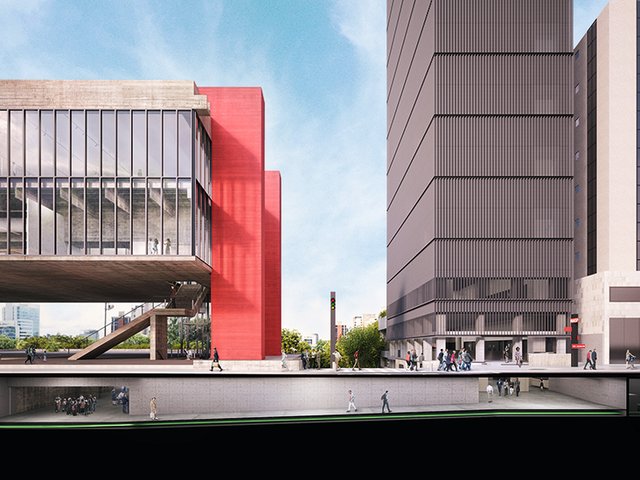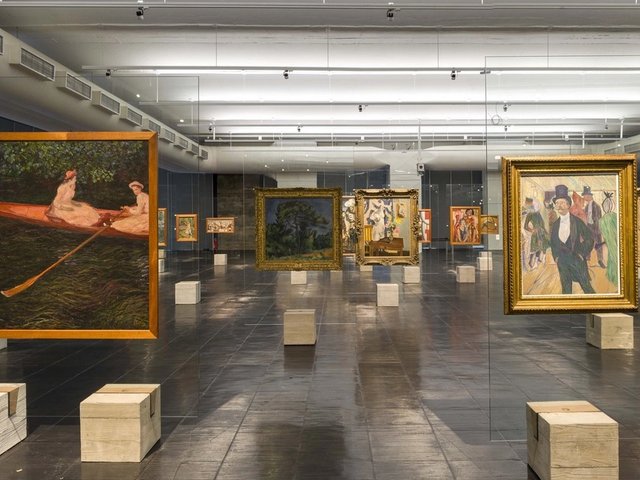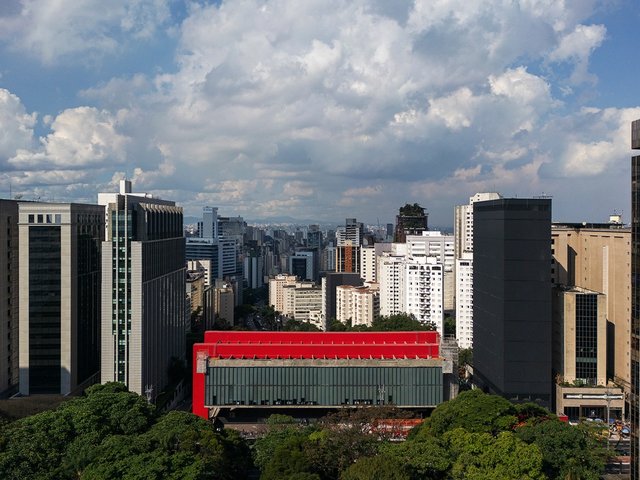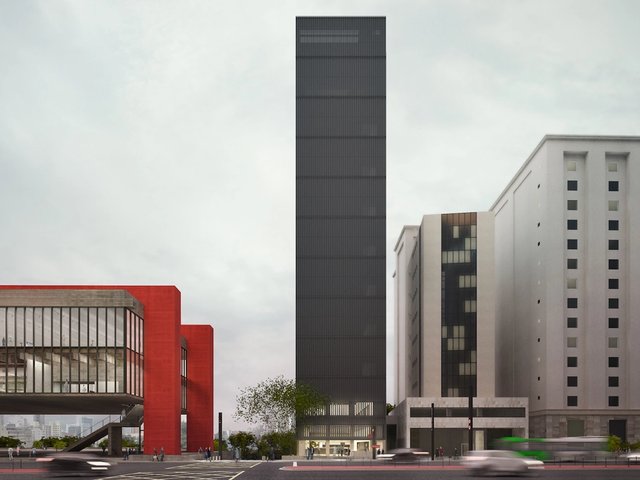The Museu de Arte de São Paulo Assis Chateaubriand (Masp) will unveil its $43m (250m reais) expansion in March 2025 after a long delay. The project will connect the existing structure with a new 14-storey building via an underground tunnel (to be completed later in 2025), adding a total of more than 11,000 sq. m to its campus and more than doubling its current space.
The newly constructed building is affectionately named Pietro Maria Bardi, after the first artistic director of Masp. Bardi was the husband of the celebrated Italian Brazilian architect Lina Bo Bardi, designer the first Masp building—a glass and concrete structure, which opened in 1968 and is considered a landmark of Brazilian Modernist architecture. The original Masp building is named in honour of its architect.
In addition to five new galleries adding an extra 66% to the museum’s current exhibition space, the Pietro building will include conservation laboratories, a reception area, classrooms, two multi-purpose rooms, storage, loading docks, a restaurant and a café.
In a statement, Heitor Martins, the director-president of Masp, said that the museum “has grown and become bigger than its building. It was necessary to push the boundaries.” The addition of the Pietro building and new public programmes the museum is planning mark ”a new phase for Masp”, he added, “even more inclusive, diverse and plural”.
The project is spearheaded by the architects Martin Corullon and Gustavo Cedroni of Metro Arquitetos Associados, who chose a minimal design that would harmonise with the Lina building and not “disturb” it. The new structure consists of a façade made of perforated and pleated metal cladding. The materials also serve to reduce internal heating and increase energy efficiency.
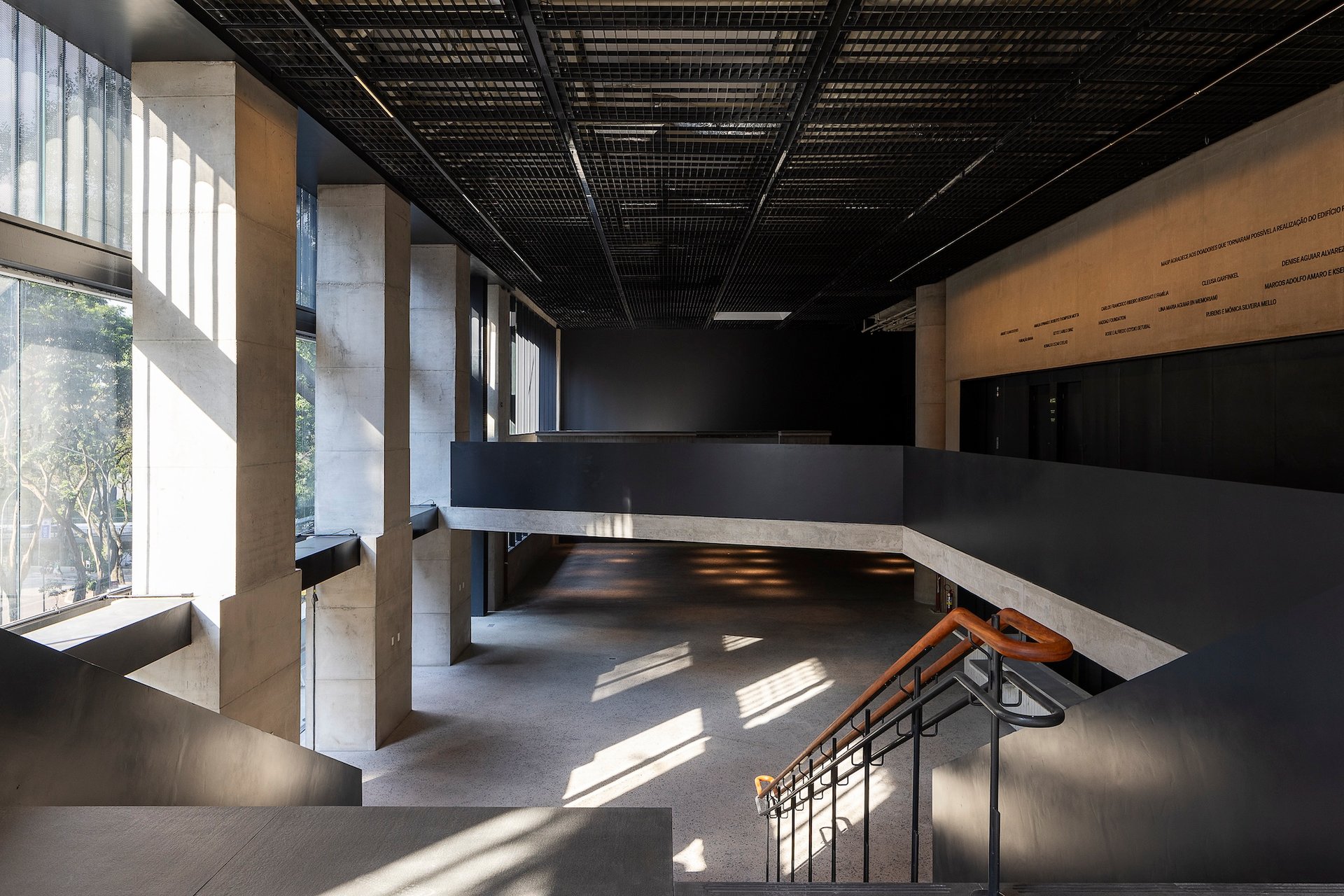
The entrance of Masp's new Pietro Maria Bardi Building Photo: Leonardo Finotti, courtesy Masp
“We opted for a clean look, a homogeneous façade,” Corullon said in a statement. “At the same time, the monolithic design, inspired by the typologies of vertical museums such as those in New York, stands out from its surroundings and gives it a character of its own.”
The architects first worked with Masp in 2015 to oversee the reinstallation of the “glass easels” that Lina Bo Bardi designed for the museum to showcase its permanent collection, which had been dismantled in the 1990s and reinstated under Masp’s artistic director Adriano Pedrosa.
The new construction project was launched in 2019 and has been funded entirely through private donations. Donors include the Brazilian art collector Cleusa Garfinkel; Denise Aguiar Alvarez, the director of Fundação Bradesco; André and Lilian Esteves, philanthropists with a background in investment banking; and the politician Ronaldo Cezar Coelho.
To commemorate the inauguration, Masp will present a series of exhibitions and programmes reflecting on the history of the museum and its expansive collection. Masp’s annual curatorial framework for 2025 will be titled Histories of Ecology, exploring the relationship between humans and the environment. Previously, the museum had the capacity to display just around 1% of its 11,000-piece collection.
Next year, Masp also plans to introduce a free exhibition and programming series in its publicly accessible area, located beneath an overhang of the Lina building that faces the Avenida Paulista, one of the main avenues in São Paulo. The museum plans to boost its upkeep of the space, which in the past has been vandalised, littered and occupied by tents used by the city's unhoused population.



